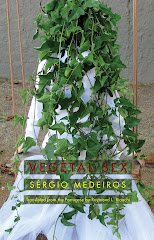 If you grew up in the Midwest Chicago will always be a comfortable city. Unlike New York Chicago is a city where the country and the city flow together almost seamlessly. The streets continue out into the suburbs and the flat Midwestern plains are not far away from the artificial mountains that sit at the middle of our metropolis. Everything about Chicago is comfortable, except the weather.
If you grew up in the Midwest Chicago will always be a comfortable city. Unlike New York Chicago is a city where the country and the city flow together almost seamlessly. The streets continue out into the suburbs and the flat Midwestern plains are not far away from the artificial mountains that sit at the middle of our metropolis. Everything about Chicago is comfortable, except the weather.Until recently the special exhibitions and permanent collections of Chicago's Museum's were not especially provocative. One can become exhausted in museums such as the Metropolitan in New York or the Tate in London but our museum's never gave the visitor that sense of being overwhelmed until now.
The Modern Wing of the Art Institute of Chicago is a masterpiece created for Chicago by Italian architect Renzo Piano. The juxtaposition of this new wing (It is almost the same size as the old museum) with the staid and terminally Midwestern be aux arts building that is joins is jarring and overwhelming.
Most Chicagoans view the Art Institute in the same way they view Comiskey Park or Wrigley Field. They know what they are going to get and it is 'nice' in a Midwestern way. The Modern Wing changes everything. The old standards are no longer in the Art Institute. The room of armor, the Chagall Windows, the small galleries filled with Cezannes and Monets are a thing of the past now and this is a welcome change.
The first thing you notice in the Modern Wing is the quality of the light. Unlike the older sections of the Art Institute the Modern Wing is filled with natural light. A kind of atrium joins the Museum to the city and the street. Out of every window you can see the 360 degree panorama of the city. On one side you have the many famous buildings of the Michigan Av Streetwall, on the other the Wing is joined to Millenium Park by a wonderful over the street footbridge and on the other side you can see the water and the lake.
The gallery spaces are not only filled with some of the most important works of art of the past 100 years (Modern beginning in 1915)- But the galleries are so open and light filled that you can actually enjoy the paintings in many different settings. I especially liked the design and furniture rooms which are filled with drawings and models of famous buildings and design pieces.
There are whole rooms filled with installations and rooms for films. In the end the whole museum allows you to get a sense of art since 1915 that in the old museum seemed an afterthought in relation to the Art Institute's enormous French Impressionist collection.
Another aspect of the museum that is interesting are the public spaces. The Terzo Piano restaurant sits on the roof and has easily the best views of the downtown. A garden is still under construction but it melds well with the Lurie Shoulder Garden in Millennium Park.
The thing that the Modern Wing does most effectively is remove provincialism from the Art Institute. For many of us who grew up on the Art Institute it always seemed that we were in Bertha Honore Palmer's Salon in the pre-Modern Wing museum .
That stodginess has been eliminated. The only criticism that I have is that to get from the lobby to the pedestrian bridge there are only down escalators creating a line at the only Elevator but this is a traffic issue and does not take away from Piano's triumph.





